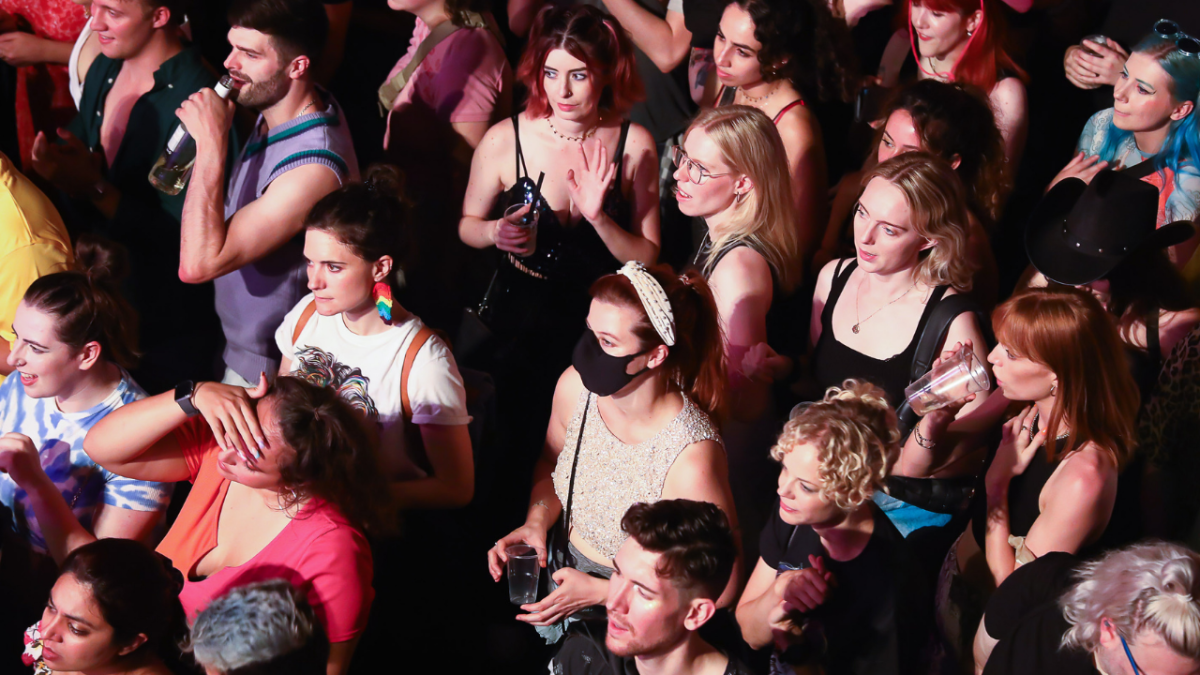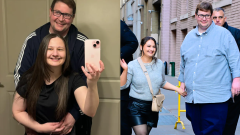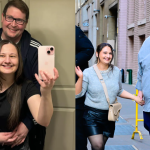
With COVID case numbers surging again across the country and a third wave practically on our doorstep, MPs and epidemiologists are encouraging people to wear masks in public again and have urged governments to push mask-wearing messaging.
Six Victorian Labor MPs have said the state needs more public health messaging on things like ventilation, boosters and masks as the COVID death numbers have risen.
But although they’re talked about a lot, masks are worn less and less these days. About half the commuters on every damn train, tram or bus flout the rules and expose their mouths and noses.
We’ve been told consistently masks work best when everyone’s wearing one and we ought to wear them to help protect our community more than anything. But how much protection does my mask really offer me if I’m in a sea of bare faces?
What do masks do?
Masks work to limit the number of virus particles leaving a sick person’s orifices. When someone talks, coughs, sneezes or even breathes, small drops of liquid called respiratory droplets send your saliva, mucus and other yuckies flying through the air, potentially to land on or be inhaled by a new host for the virus.
So the more people wear them the better the chances an infected person will too. And the more face coverings, the fewer particles in a room.
But there is also loads of evidence to suggest masks protect the wearer even when others around them are mask-free.
Yes, masks are effective
Wearing a mask can reduce the number of particles that you inhale through your mouth and nose.
Studies on the topic have compared protection for mask wearers vs the unmasked in different indoor settings and found they can do a hell of a lot of good in crowded or confined spaces.
A modelling study from December 2021 found that on a plane where the air is not well-ventilated wearing a mask reduced the risk of infection by 54 per cent for people seated near a COVID-positive passenger.
An investigation of an outbreak at a Switzerland hotel in 2020 showed that none of the staff who wore masks were infected but those who wore only plastic face shields were.
But unfortunately just slapping one on your face may not save you. The type of mask and the way it’s worn has the biggest impact on how much it can protect you.
Which type is best?
The level of protection a masks offers all depends on the material, quality and the fit.
Health experts recommend using an N95 or equivalent to protect yourself against the Omicron subvariant BA.2 which is dominant in NSW and Victoria and more infectious than previous strains.
But other types can work too.
A Tokyo study found a basic binch cotton mask offered between 17 and 27 percent protection to the wearer, surgical masks 47 percent to 50 percent protection, loose-fitting N95 57 percent to 86 percent protection, and a tightly sealed N95 79 percent to 90 percent protection.
If you don’t have an N95 many jurisdictions around the world now recommend layering surgical and cloth masks.
One study from the Centers for Disease Control and Prevention in the US found that if you just wear a regular surgical mask on its own and someone coughs on you you’re only protected from about 7.5 percent of the particles. But the protection could be as much as 83 per cent when the surgical mask is knotted at the sides and layered with a cloth mask.
Another February 2021 study that used lab dummies showed wearing both types together offered as much as 92 per cent more protection from aerosol particles. Sounds like a pretty good option.
The Therapeutic Goods Administration of Australia also said it was essential that “an adequate face seal is achieved between the facepiece of the respirator and the face of the wearer”.
So yeah, it needs to cover your nose hunny.
To find out more about specific products on the market in Australia you can look at the TGA’s post-market review of a lot of face masks it conducted in March 2022. It concluded many were not performing as intended or advertised which could pose a risk to public health and safety. You can check various results here.
The bottom line is masks do absolutely work. But the type and technique matter so don’t be shocked if you wore a saggy single-layer cloth mask on your morning commute every day and then *somehow* got COVID.
The safest option is always to mask up, social distance and stay outdoors or in well-ventilated rooms.







